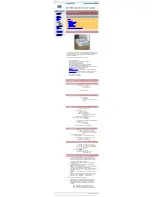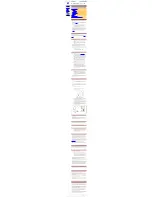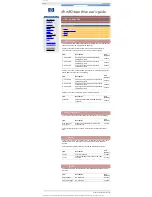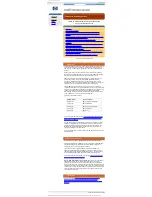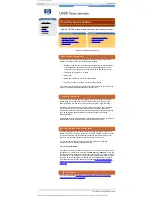
Unix - dec
hp learning products
http://www.hp.com/support/tape
may have a later version
UNIX configuration
introduction
hp systems
compaq systems
ibm RS/6000 systems
pc based UNIX systems
silicon graphics
sun systems
verify installation
UNIX glossary
Compaq systems, Digital UNIX
This topic is available in English only.
contents of this section
configuring for Digital UNIX
related topics
verifying installation
glossary
configuring for Digital UNIX
1
Add the following entry to your
/etc/ddr.dbase
file:
SCSIDEVICE
Type = tape
Name = "HP" "Ultrium"
note:
For other devices, substitute "Ultrium" in the command as follows:
DLT1 = "DLT1"
DAT devices = "C----A"
Note: Change "C----A" to the appropriate value for your
DAT device. DAT24 drives ="C1537A"; DAT40
drives="C5683A"; DAT24x6 autoloaders="C1557A"; DAT40x6
autoloaders="C5713A".
2
Set the following parameters in the file:
PARAMETERS:
MaxTransferSize = 0xffffff
ReadyTimeSeconds = 600
InquiryLength = 0x20
DENSITY:
DensityNumber = 0,3
DensityCode = 0x00
Blocking = 0
CompressionCode = 0x0
Buffered = 0x1
DENSITY:
DensityNumber = 1,2
OneFileMarkOnClose = yes
DensityCode = 0x00
Blocking = 0
CompressionCode = 0x1
Buffered = 0x1
3
Rebuild the kernel by running:
% /sbin/ddr_config -c /etc/ddr.dbase
then reboot the system with the tape drive attached. The device files for the
Ultrium drive will be generated when you reboot.
4
The names of the device files can be interpreted as follows:
For Tru64 (Digital) UNIX 4.x
Device files will be generated in the
/dev
directory in the following format
[n]rmtX D
where:
n
No rewind
rmt
Magnetic tape identifier
X
Instance number assigned to the drive by the operating system
(0 is the first, 1 is the second, and so on)
D
Density number mapping letter one of h, l, m or a
h
Compression on (high density, maps to density number 1)
m
Compression off (medium density, maps to density 2)
l
Compression off (low density, maps to density number 0)
a
Compression on (alternate density, maps to density 3)
For example,
/dev/rmt/nrmt0h
is a device file for the first device, which
is a high-density, no-rewind device.
For Tru64 (Digital) Unix 5.x:
Device files will be generated in
/dev/tape
or
/dev/ntape
directories
for rewind or no-rewind devices in the following format
tapeX
density number 0 driver without compression
tapeXc
density number 0 driver with compression
tapeX_dY
density number d driver (compression controlled by
ddr.dbase file)
where:
X
drive instance number (0 is the first drive)
Y
density number
In the case of Ultrium customers will only need to use the tape0 and tape0c
device files.
Once the device files have been created, you should confirm that your new tape
drive is working properly. See
Verifying Installation
.
© 2001, Hewlett-Packard Company
file:///C|/Documents%20and%20Settings/topher.COL-SPRINGS/Desktop/dltvs80%20manual/document/common/unix/reseller/eng/c_compaq.htm [11/29/2001 8:34:23 AM]





